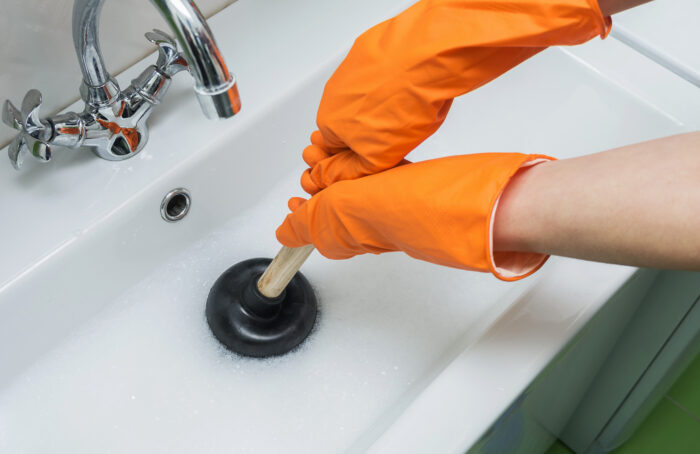Stubborn Sink Clogs: Best Ways to Tackle a Stopped-Up Sink

A clogged sink is one of the most frustrating plumbing issues homeowners face. Whether it's a slow-draining kitchen sink full of grease and food particles or a bathroom sink blocked by hair and soap scum, dealing with a stubborn clog can be a hassle. Fortunately, there are several effective methods to clear the blockage before calling a professional plumber. Let’s explore the best ways to tackle a stopped-up sink.
1. Boiling Water: The First Line of Defense
One of the easiest and most effective methods for clearing minor clogs is pouring boiling water down the drain. This works best for grease and soap-related blockages.
How to do it:
- Bring a pot of water to a boil.
- Carefully pour it down the drain in two to three stages, allowing each pour to work for a few seconds before adding more.
- Run hot tap water to see if the clog is cleared.
Best for: Grease, soap scum, and minor clogs.
2. Baking Soda and Vinegar: The Natural Cleaner
This classic combination creates a fizzy reaction that can help break down mild blockages.
How to do it:
- Pour ½ cup of baking soda down the drain.
- Follow with 1 cup of white vinegar.
- Let the mixture sit for 15–30 minutes.
- Flush with hot water.
Best for: Organic debris and mild clogs.
3. Plunging: The Old-School Method
A good-quality plunger can create enough suction to dislodge most sink clogs.
How to do it:
- Fill the sink with enough water to cover the plunger’s rubber cup.
- Place the plunger over the drain and pump it up and down vigorously.
- After 20–30 seconds, check if the water drains.
- Repeat if necessary.
Best for: Food scraps, small solid clogs, and standing water.
4. Removing and Cleaning the P-Trap
Sometimes, the clog is trapped in the U-shaped pipe under the sink, known as the P-trap.
How to do it:
- Place a bucket under the sink to catch water.
- Unscrew the slip nuts on both ends of the P-trap.
- Remove debris and rinse the trap thoroughly.
- Reassemble and test the drain.
Best for: Deep-seated clogs and visible obstructions.
5. Drain Snake or Auger: The Heavy-Duty Approach
A plumber’s snake or drain auger is a flexible tool designed to reach deep into the pipes and break up clogs.
How to do it:
- Insert the snake into the drain and turn the handle.
- Push it further until you feel resistance.
- Rotate and pull out debris.
- Flush the drain with water.
Best for: Hair clogs and stubborn blockages.
6. Chemical Drain Cleaners: Use with Caution
Chemical drain cleaners can dissolve tough clogs, but they should be used sparingly as they can damage pipes over time.
How to do it:
- Follow the manufacturer’s instructions carefully.
- Pour the cleaner down the drain and let it sit.
- Rinse thoroughly with water.
Best for: Severe clogs when other methods fail (use as a last resort).
Preventing Future Clogs
To avoid dealing with clogged sinks in the future, consider these preventive measures:
- Use a drain cover to catch food scraps and hair.
- Avoid pouring grease or coffee grounds down the drain.
- Run hot water after each use to help flush debris.
- Clean drains regularly with baking soda and vinegar.
When to Call a Plumber
If you've tried these methods and the sink is still clogged, it might be time to call a professional. A plumber can diagnose and resolve deeper issues like tree root intrusion, collapsed pipes, or severe buildup.
Final Thoughts
A stubborn sink clog can be a nuisance, but with the right techniques, you can often clear it yourself. Start with simple solutions like boiling water and baking soda before moving on to more aggressive methods. And remember—regular maintenance is key to keeping your drains flowing freely!
